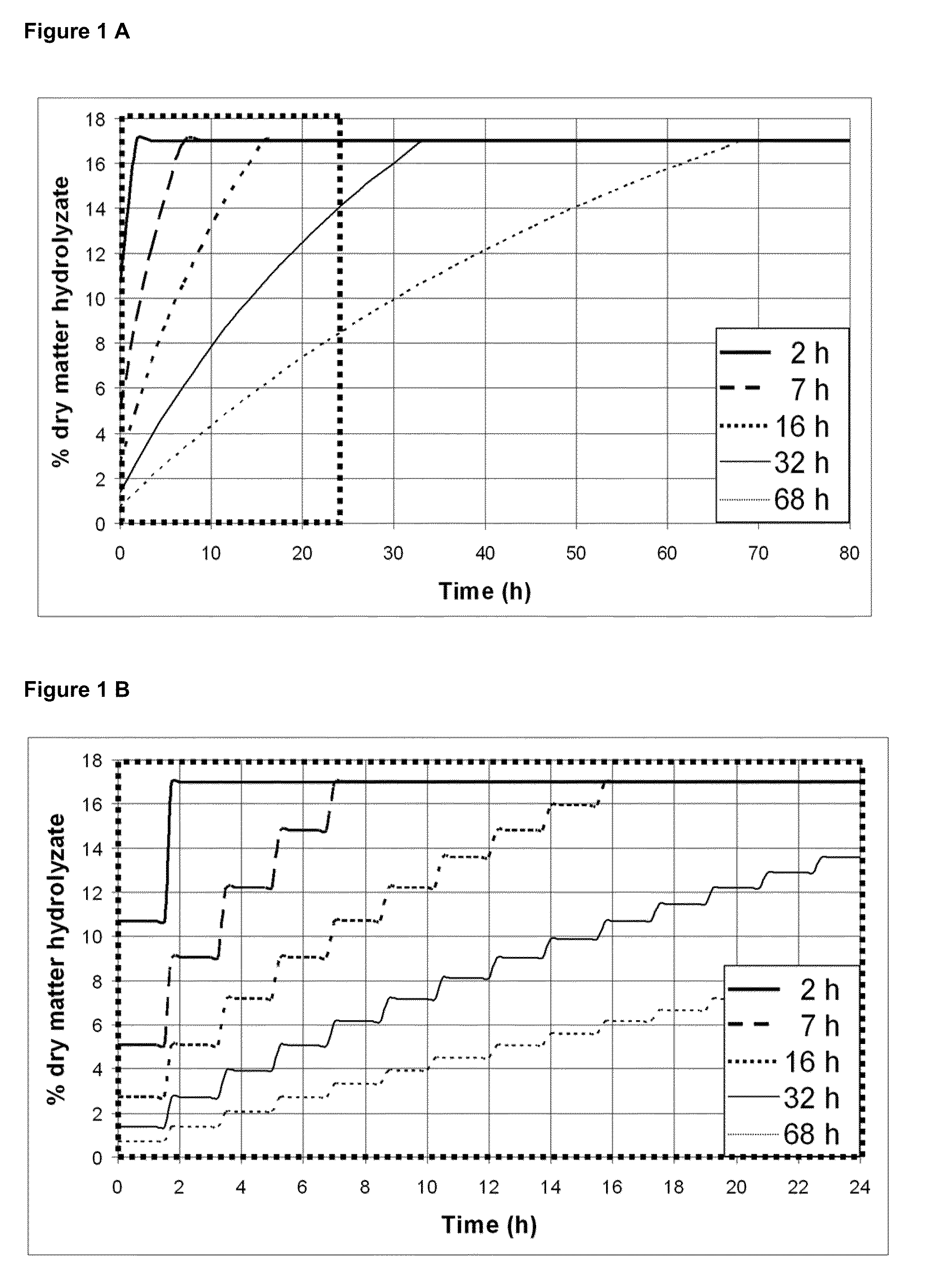Fed batch process for biochemical conversion of lignocellulosic biomass to ethanol
a technology of lignocellulosic biomass and enzymatic hydrolysis, which is applied in the direction of biofuels, fermentation, etc., can solve the problems of inability to convert disadvantages of potential food or feed plants for producing ethanol, and inability to achieve the conversion of lignocellulosic material into sugar, etc., to achieve the reduction of cellulase product inhibition, increase in hydrolysate consistency and volum
- Summary
- Abstract
- Description
- Claims
- Application Information
AI Technical Summary
Benefits of technology
Problems solved by technology
Method used
Image
Examples
example
[0069]Ground corncobs of 0.5 to 1 cm3 particle size were pretreated by autohydrolysis steam explosion pretreatment at 205° C., i.e. cooking pressure of 235 psig for a residence time of 8 min.
[0070]Prehydrolysed corncobs were shredded in a garden shredder and then diluted with fresh water to the desired consistency for hydrolysis and fermentation.
[0071]A 2.5 ton hydrolysis and fermentation trial was carried out at 17% consistency. Enzymatic hydrolysis was carried out at 50° C., pH 5.0. Fermentation was carried out at 33° C., pH 5.3. Aqueous ammonia at 30% concentration was used to adjust pH. Commercially available lignocellulosic enzyme product and industrial grade ethanologenic yeast were used.
[0072]Pilot scale hydrolysis and fermentation was carried out in a heat traced, jacketed 6000 liter tank equipped with a recirculation pump, a high speed mixer and a wiper.
[0073]Co-addition of corncobs prehydrolysate at 35% DM and liquid enzyme was made over a period of 16 h. Ten additions wer...
PUM
| Property | Measurement | Unit |
|---|---|---|
| feed time | aaaaa | aaaaa |
| total feed time | aaaaa | aaaaa |
| feed time | aaaaa | aaaaa |
Abstract
Description
Claims
Application Information
 Login to View More
Login to View More - R&D
- Intellectual Property
- Life Sciences
- Materials
- Tech Scout
- Unparalleled Data Quality
- Higher Quality Content
- 60% Fewer Hallucinations
Browse by: Latest US Patents, China's latest patents, Technical Efficacy Thesaurus, Application Domain, Technology Topic, Popular Technical Reports.
© 2025 PatSnap. All rights reserved.Legal|Privacy policy|Modern Slavery Act Transparency Statement|Sitemap|About US| Contact US: help@patsnap.com



